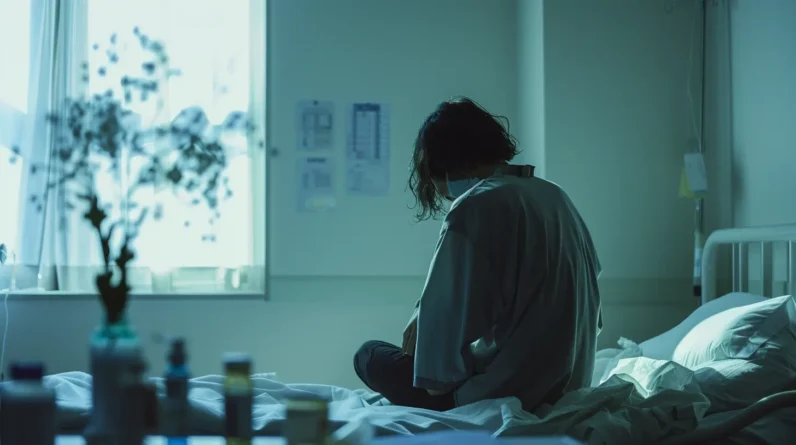
We use visualization techniques to reduce stress and anxiety, fostering a profound mind-body connection that enhances our emotional well-being. By incorporating techniques like guided imagery, color breathing, and progressive muscle relaxation into our daily routines, we can alleviate symptoms of anxiety and depression, and even improve our physical performance. As we tap into the science behind visualization, we can reveal new neural pathways that reinforce goal achievement and emotional regulation. With consistent practice and adaptation, we can overcome challenges in visualization, unveiling the full potential of our mind-body health. Exploring further can help us uncover more strategies to integrate into our wellness journey.
Benefits of Visualization
We can harness the power of visualization to greatly improve our mental and emotional well-being, as research has consistently shown that this technique offers numerous benefits for mind-body health. By engaging in regular visualization practice, we can reduce stress and anxiety, promoting relaxation and calmness. Visualization also fosters positive thoughts and emotions, leading to improved emotional well-being and resilience. A mental health professional may recommend visualization as a complementary therapy to traditional treatments. By visualizing our goals and engaging all our senses, we can improve overall performance and achieve success.
Effective visualization techniques can be used to enhance physical performance, alleviate symptoms of anxiety and depression, and even improve sleep quality. By incorporating visualization into our daily routine, we can take a proactive approach to maintaining ideal mind-body health.
Techniques for Effective Visualization
Effective visualization techniques can be categorized into several methods, each with its unique approach to promoting relaxation, stress relief, and improved mental well-being. We find that guided imagery and safe place visualization are particularly effective in creating a mental sanctuary for stress relief. Color breathing, which involves assigning specific colors to desired emotions, can also aid in stress relief and mood enhancement. Additionally, progressive muscle relaxation can be integrated with visualization to promote physical awareness and relaxation. Mental rehearsal, a form of visualization, prepares us for future tasks by vividly imagining success.
Practicing these techniques, we can enhance our cognitive functioning and emotional regulation, ultimately strengthening our mind-body connection for improved overall health. Regular practice is key to mastering these techniques and experiencing their numerous benefits.
The Science Behind Visualization
As we explore the various techniques for effective visualization, it’s clear that understanding the underlying science is essential to harnessing its full potential, and research has shed light on the profound impact of visualization on both our mental and physical well-being. We’ve discovered that visualization activates the same neural pathways as actual experiences, enabling us to rehearse actions and responses without physical execution, which can enhance performance and skill retention.
By engaging in visualization, we can reduce stress and cortisol levels, promoting overall mental well-being and relaxation. Repeated mental imagery can create new neural pathways, reinforcing our belief in goal achievement and improving self-efficacy through neuroplasticity. This understanding empowers us to tap into the transformative power of visualization, leveraging its benefits for emotional regulation, cognitive-behavioral therapy, and overall well-being.
Practical Applications of Visualization
Numerous practical applications of visualization have emerged, transforming the way individuals manage pain, regulate emotions, and achieve personal goals. We can harness visualization techniques to create mental images that promote relaxation and reduce stress. By visualizing our goals, we can align our subconscious mind with desired outcomes, leading to increased motivation and success. Regular visualization exercises can also enhance emotional regulation, improving coping strategies for individuals facing anxiety or depression.
In addition, techniques like safe place visualization provide a mental sanctuary, allowing us to escape from stressors and promote overall well-being. By incorporating visualization into our daily routines, we can foster greater self-awareness and emotional growth, ultimately leading to positive outcomes and improved stress management.
Overcoming Challenges in Visualization
When we commence a visualization practice, we may encounter challenges that hinder our progress, such as struggling to create vivid mental images or maintaining focus in a distracting environment. We may find it difficult to overcome these challenges, leading to frustration and decreased motivation. However, with consistent practice and the right techniques, we can improve our mental imagery and focus.
Grounding techniques and sensory awareness exercises can help us connect with our surroundings and quiet our minds. Seeking professional guidance or participating in structured visualization sessions can also provide us with the tools we need to overcome challenges. By persisting and adapting our approach, we can master visualization techniques and achieve the mind-body health benefits we desire, even if we don’t see immediate results.
Conclusion
As we weave visualization into the fabric of our daily lives, we begin to notice the subtle yet profound shifts in our mind-body health. Like a master painter, our minds brush vibrant colors onto the canvas of reality, transforming stress into serenity and anxiety into calm. With each deliberate stroke, we strengthen the bridge between our conscious and subconscious, releasing a deeper sense of balance and harmony.






